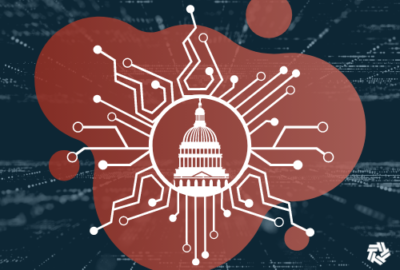DLA on the right AI path
David Koch, DLA’s research and development chief, points to the opportunity for AI and machine learning to help improve the agency’s demand-planning process...
The Defense Logistics Agency, has its origins way back in WWII. But its plunge into the world of artificial intelligence only surfaced in 2018, when the combat logistics support agency, which manages America’s massive global supply chain, hosted an enterprise-wide AI information-gathering session.
“We brought about 70 people together to give them an introduction into AI, and then brainstormed ideas across the enterprise, across every business area, every different functional area to kind of get a scope on the type of projects that we may need to pursue,” said Teresa Smith, DLA’s Chief Data Officer, on Federal Monthly Insights – Repurposing Manpower through Automation.
In partnership with DLA’s Research & Development office, Smith said several projects took shape after a little brainstorming netted around 48 ideas.
David Koch, DLA’s R&D chief, points to the opportunity for AI and machine learning to help improve the agency’s demand-planning process as one of two big areas they intend to tackle.
“When there’s high demand for an item, it’s really easy to predict how much you’re going to need and ensure you always have it on the shelf waiting for the warfighter to request it,” said Koch on Federal Drive with Tom Temin. “But really, when you get to low demand or infrequent-demand items, it becomes a lot harder to predict and we think that there’s opportunity for artificial intelligence to help us with that journey.”
DLA will be teaming up with the Joint Artificial Intelligence Center on demand planning. The other big area DLA started pursuing about a month ago is how AI might help reduce supply-chain risk.
The terms AI and machine learning are sometimes used interchangeably, but Smith points out that the first, AI, is “predictive,” while the other is there to “constantly learn the mistakes and refine the logic going forward.”
“Artificial intelligence, the way we look at it is we’re using the machines and a host of data, and I can’t emphasize enough as the chief data officer, that you can’t do AI effectively without good accessible data,” said Smith. “But the way we look at it is AI is performing those tasks that require that human intelligence, using massive amounts of data, recognizing patterns, learning from that experience and drawing those conclusions to make predictions or to take action.”
George Duchak, DLA’s chief information officer, arrived at the agency in September 2019. Koch praised Duchak for the path on which he put DLA.
“He had three priorities when he came in,” said Koch. “One of them was to improve the user experience. The second one was to create a DLA platform, so you think of kind of that single sign-on to do everything you need to do, instead of signing in multiple times for different applications. But the third one is really applicable to what we’re talking about today and that is creating a data architecture for AI, because as Teresa so rightly said, data is the key to being able to be successful with AI.”
Copyright © 2024 Federal News Network. All rights reserved. This website is not intended for users located within the European Economic Area.
Peter Musurlian is a producer at Federal News Network.
Follow @PMusurlianWFED






